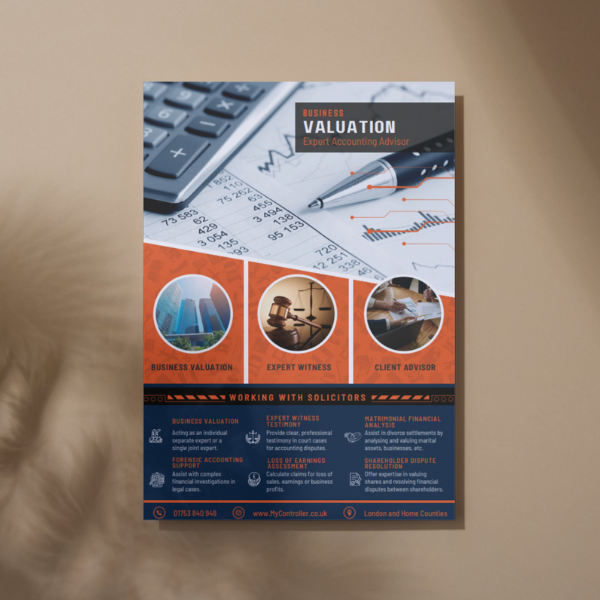The 5-Year Plan: Becoming an Elite Business Before Exit
The 5-Year Plan: Becoming an Elite Business Before Exit

Exiting a business isn't just about timing—it's about maximizing value, structuring operations, and preparing leadership for a seamless transition. If you're planning to sell, merge, or transition ownership in the next five years, now is the time to begin strategic preparations that can significantly increase your final valuation.
At MyController, we treat exit planning like elite athletic training—structured and methodical, ensuring business owners optimize financial strength, market positioning, and operational efficiency before transitioning. With five years of preparation, businesses have the opportunity to increase their value exponentially while reducing risk.
Why Start Five Years Before Exit?
Many business owners underestimate the complexity of an exit. Without early preparation, companies often scramble to fix financials, align operations, and package the business at the last minute—leading to lost value and stressful negotiations.
Starting five years before exit allows business owners to: ✔ Strengthen financial stability, ensuring a clean balance sheet and cash flow reliability. ✔ Improve business independence, reducing reliance on key individuals for daily operations. ✔ Refine competitive advantage, making the company attractive to buyers or investors. ✔ Structure leadership succession, allowing for a smooth transition post-sale.
Business owners who follow this elite-level strategy see higher sale prices, better deal terms, and faster transactions when they finally sell.
Elite Training for Your Business: The 5-Year Roadmap
This plan follows a structured framework designed to progressively strengthen the business before exit. It consists of four core focus areas, each contributing to long-term value creation.
Phase 1: Strategic Growth & Market Positioning (Year 1–2)
A business that demonstrates consistent growth attracts higher valuations. In the first two years, owners focus on building scalable revenue streams and competitive positioning.
- Expanding Market Reach – Strengthen branding, refine customer retention strategies, and increase recurring revenue sources.
- Optimising Leadership & Succession Planning – Build a management team that can function independently of the owner.
- Technology Investment & Process Automation – Improve operational efficiency and scalability.
- First Valuation Check (End of Year 1) – Establish benchmarks for financial and operational metrics.
Phase 2: Financial Structuring & Profitability Optimisation (Year 3)
Once growth strategies are in place, the next step is financial optimization—ensuring profitability, stable cash flow, and a clean balance sheet before transitioning.
- Refining Cost Structures – Reduce unnecessary expenses while maintaining growth momentum.
- Strengthening Profitability Margins – Improve gross margins and refine pricing strategies.
- Preparing for Due Diligence – Organizing contracts, agreements, and financial documentation for future investors.
- Second Valuation Review (End of Year 3) – Evaluate financial improvements and adjust strategies.
Phase 3: Leadership Transition & Exit Structuring (Year 4)
Preparing the company for exit means ensuring it can run smoothly without the current owner—making it more attractive to buyers.
- Restructuring Ownership Dependencies – Shift operational responsibilities to key executives.
- Optimizing Tax & Legal Structures – Ensure compliance, tax efficiencies, and exit-friendly corporate structuring.
- Final Operational & Leadership Adjustments – Address any last-minute gaps before entering the final year.
- Third Valuation Review (End of Year 4) – Assess final adjustments before entering the final sprint.
Phase 4: The 12-Month Sprint to Exit (Year 5)
In the final year, businesses move into high-intensity, structured exit preparation. This is where MyController’s Sprint-Based System comes into play, dividing the final year into 8 structured Sprint Cycles with 46 total sprints—ensuring every aspect of the business is optimized before sale.
- Balance Sheet Clean-up
- Revenue & Profitability Enhancement
- Legal, Tax, & Compliance Finalisation
- Buyer Positioning & Negotiation Readiness
- Valuation Assessments Every 4 Months
By following this five-year strategy, businesses exit stronger, more valuable, and prepared for investor scrutiny.
Why the 5-Year Plan Guarantees the Best Exit Outcomes
Just like elite athletes’ train for competition, businesses that progressively prepare for exit gain a competitive advantage when it's time to sell.
- Higher Valuation – Businesses with structured financial growth command better sale prices.
- Stronger Negotiation Power – Buyers are more willing to agree to favourable deal terms when businesses are exit-ready.
- Seamless Transition – Leadership succession planning prevents disruptions post-sale.
The best exits aren’t rushed—they’re strategically planned. The sooner a business begins exit planning, the stronger its position when the time comes.
Coming Up Next: In the next blog, we’ll explore the 3-Year Exit Plan—perfect for businesses looking to refine profitability, scalability, and operational strength before selling.
Share:







